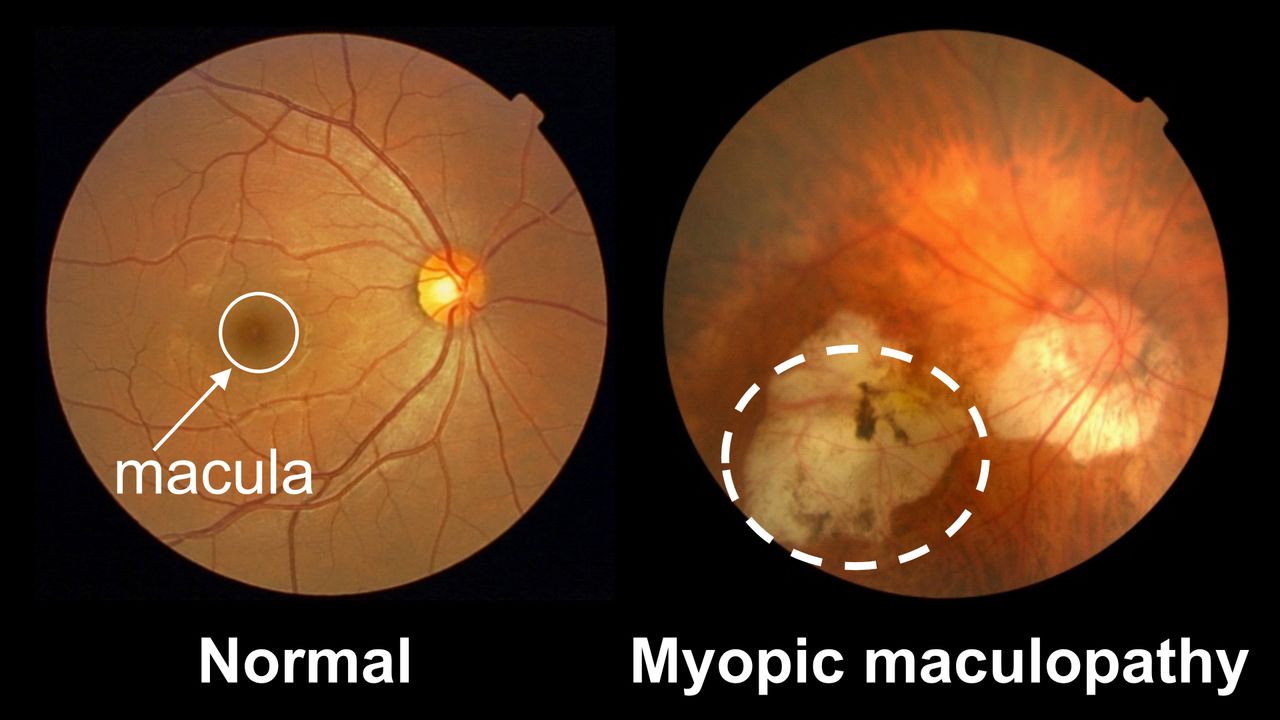研究成果 Research Results
- TOP
- News
- Research Results
- Incidence of myopic maculopathy much higher among Japanese compared with other Asian people
Incidence of myopic maculopathy much higher among Japanese compared with other Asian people
Study gives new insight into the leading cause of irreversible visual impairment 2020.08.31Research ResultsLife & Health

Images of a retina with a normal, healthy macula and one suffering from myopic maculopathy, the leading cause of irreversible visual impairment worldwide.
Degeneration of the macula—a particularly sensitive area of the retina—associated with severe nearsightedness is the leading cause of irreversible visual impairment worldwide, and cases are expected to increase due to the rising prevalence of nearsightedness globally. A new study from Kyushu University now shows that incidence of the condition, known as myopic maculopathy, is much higher in Japanese than other Asian populations.
As a part of the cohort study following the health of residents in the town of Hisayama, Japan, researchers led by Koh-Hei Sonoda, professor of Kyushu University’s Faculty of Medical Sciences, performed initial and follow-up eye examinations in 2012 and 2017. Of a total of 2,164 Japanese residents aged 40 years or older who had no myopic maculopathy at the initial eye examination in 2012, about 1% developed myopic maculopathy over the five-year study period, which is much higher than the rate in previous studies on other Asian populations (0.08—0.12%).
The researchers also confirmed that aging and longer axial length—that is, the distance from the front of the eye to the back—were independent and significant risk factors for myopic maculopathy. Furthermore, they found that the difference between sexes did not reach the statistically significant level.
The present study from Japan, which is one of the countries with the greatest prevalence of myopia, could provide valuable information to the world and contribute to expanding the currently limited epidemiological evidence regarding the incidence of and risk factors for myopic maculopathy.
###
For more information about this research, see “The 5-year incidence of myopic maculopathy
in a general Japanese population: the Hisayama Study,” Emi Ueda, Miho Yasuda, Kohta Fujiwara, Sawako Hashimoto, Kyoko Ohno-Matsui, Jun Hata, Tatsuro Ishibashi, Toshiharu Ninomiya, and Koh-Hei Sonoda, JAMA Ophthalmology (2020). https://doi.org/10.1001/jamaophthalmol.2020.2211
Research-related inquiries
Koh-Hei Sonoda, Professor
Department of Ophthalmology, Faculty of Medical Sciences
Contact information can also be found in the full release.
- TOP
- News
- Research Results
- Incidence of myopic maculopathy much higher among Japanese compared with other Asian people































